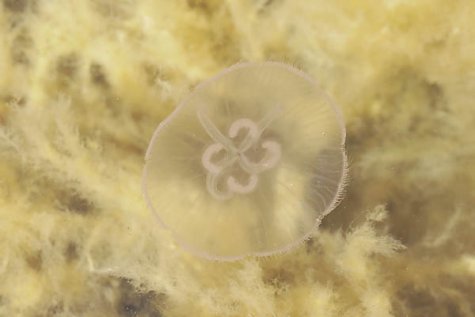Primitive jellyfish
Photo: Arne Ader
Translation: Liis
Jellyfish.
| Common jellyfish, moon jellyfish |
Meririst
|
Aurelia aurita |
In the Baltic we meet it mostly where the water is saltier, so seldom in the inner eastern parts of the Gulf of Finland. This year the jellyfish appeared in the shore waters with the cold sea water in July. We see them mostly in shallow shore waters when we go swimming. The body of the jellyfish is translucent and jelly-like, and in the centre, on the hollow side, is its mouth, surrounded by the circular or semi-circular gonads or sex organs. These are usually four, but exceptions occur. Close to the mouth are the oral lobes or arms, and simply constructed eyes and sensory organs. But by them the jellyfish observes what goes on around it and is capable of avoiding dangers despite its primitive “construction“. It grasps its food with the oral lobes; they have venom-filled nematocysts that release a searing substance. The oral arms or lobes also guide the prey towards the mouth. The nematocyst liquid is lethal for small marine invertebrates.
It moves mainly with the water flows, but to some small extent the jellyfish can also direct their movements.
Jellyfish in the Baltic around Estonia are not dangerous for humans.









